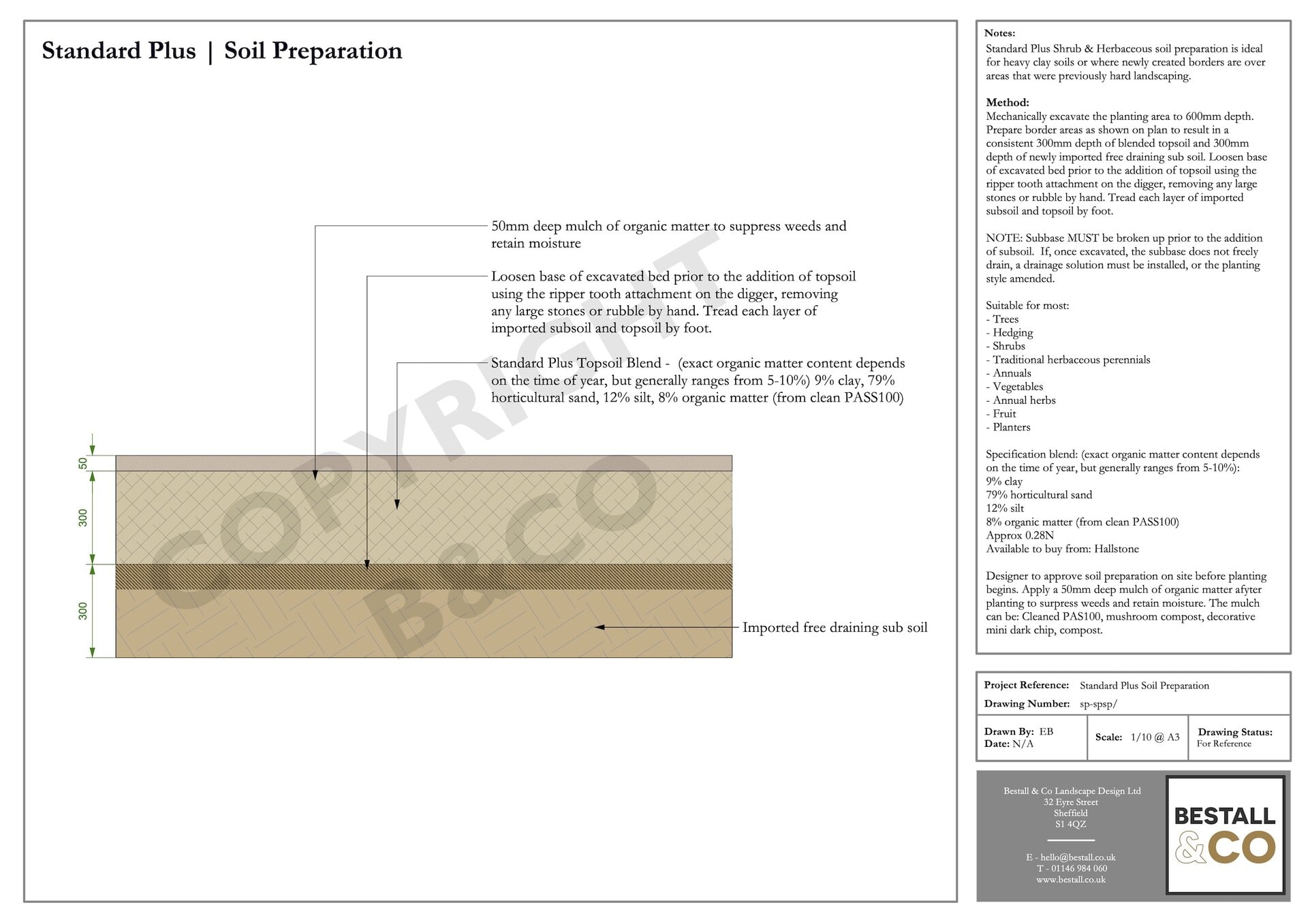The soil preparation we're recommending for this area of your garden is
Our standard plus soil preparation | Fertile Soil

Description:
Standard Plus Shrub & Herbaceous soil preparation is Ideal for heavy clay soils or where newly created borders are over areas that were previously hard landscaping.
This is a more traditional approach to soil importation, our fertile soil is made from a specific blend, designed to grow a wide range of shrubs and perennials including roses.
Method:
Mechanically excavate the planting area to 600mm depth. Prepare border areas as shown on plan to result in a consistent 300mm depth of blended topsoil and 300mm depth of newly imported free draining sub soil. Loosen base of excavated bed prior to the addition of topsoil using the ripper tooth attachment on the digger, removing any large stones or rubble by hand. Tread each layer of imported subsoil and topsoil by foot.
NOTE: Subbase MUST be broken up prior to the addition of subsoil. If, once excavated, the subbase does not freely drain, a drainage solution must be installed, or the planting style amended.
Suitable for most:
- Trees
- Hedging
- Shrubs
- Traditional herbaceous perennials
- Annuals
- Vegetables
- Annual herbs
- Fruit
- Planters
Not suitable for:
- Perennial herbs
- Acid loving plants such as Rhododendrons, Camelias, Azaleas
- Plants that require very good drainage such as some grasses and Mediterranean plants
- Not suitable for plants which require soils low in organic matter and nutrients such as Lavender and some perennials
- Not suitable for wildflowers
- Bog plants
Specification blend: (exact organic matter content depends on the time of year, but generally ranges from 5-10%):
- 9% clay
- 79% horticultural sand
- 12% silt
- 8% organic matter (from clean PASS100)
- Approx 0.28N
Available to buy from: Hallstone
Designer to approve soil preparation on site before planting begins
Client Notes:
Please note that the rate of growth and future health of the new plants will depend entirely on the quality/depth of the soil preparation.
Newly imported soil will not behave as expected due to its lack of structure. Depending on weather conditions, it can temporarily become waterlogged on the surface, hard if dry and windy, and can form a crust. We’d always recommend mulching the soil post planting.
Please expect some annual weed growth in the first two seasons. This should be either hoed off or pulled out by hand before they become established.
If the newly created beds will be left fallow (empty) for any period of time, it may be easier to use one application of weedkiller.
Updated March 2025
